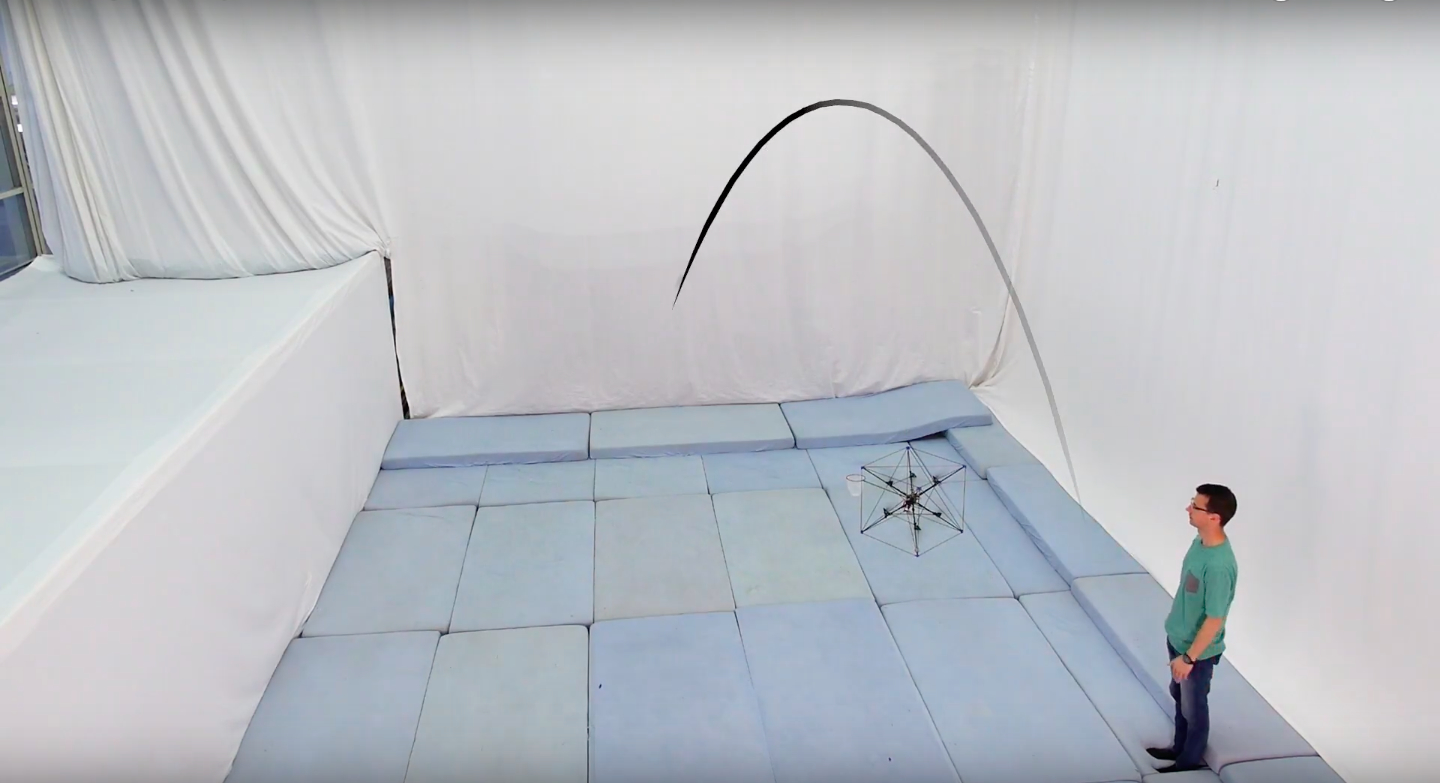
Robohub.org
Watch this omnicopter fetch a ball

We have developed a computationally efficient trajectory generator for six degrees-of-freedom multirotor vehicles, i.e. vehicles that can independently control their position and attitude. The trajectory generator is capable of generating approximately 500’000 trajectories per second that guide the multirotor vehicle from any initial state, i.e. position, velocity and attitude, to any desired final state in a given time. In this video, we show an example application that requires the evaluation of a large number of trajectories in real time.
Multirotor vehicle
The multirotor vehicle used in the demonstration is an omni-directional eight-rotor vehicle. Its unique actuator configuration gives it full force and torque authority in all three dimensions, allowing it to fly novel maneuvers. For more details, please refer to the Youtube video or the research paper: “Design, Modeling and Control of an Omni-Directional Aerial Vehicle”, IEEE International Conference on Robotics and Automation (ICRA), 2016.
Researchers
Dario Brescianini and Raffaello D’Andrea
Institute for Dynamic Systems and Control (IDSC), ETH Zurich, Switzerland – http://www.idsc.ethz.ch
Location
Flying Machine Arena, ETH Zurich, Switzerland.
Acknowledgements
This work is supported by and builds upon prior contributions by numerous collaborators in the Flying Machine Arena project. See the list here. This research was supported by the Swiss National Science Foundation (SNSF).
tags: c-Research-Innovation, ETH Zurich, Flying Machine Arena




